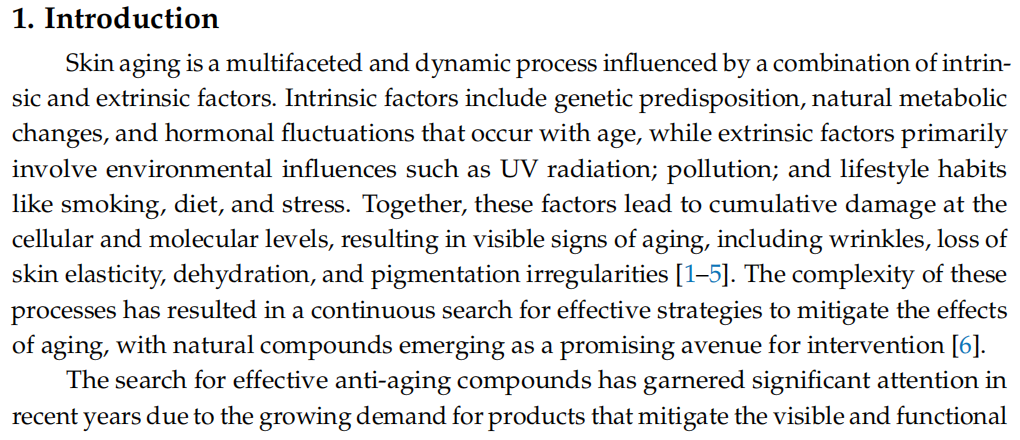

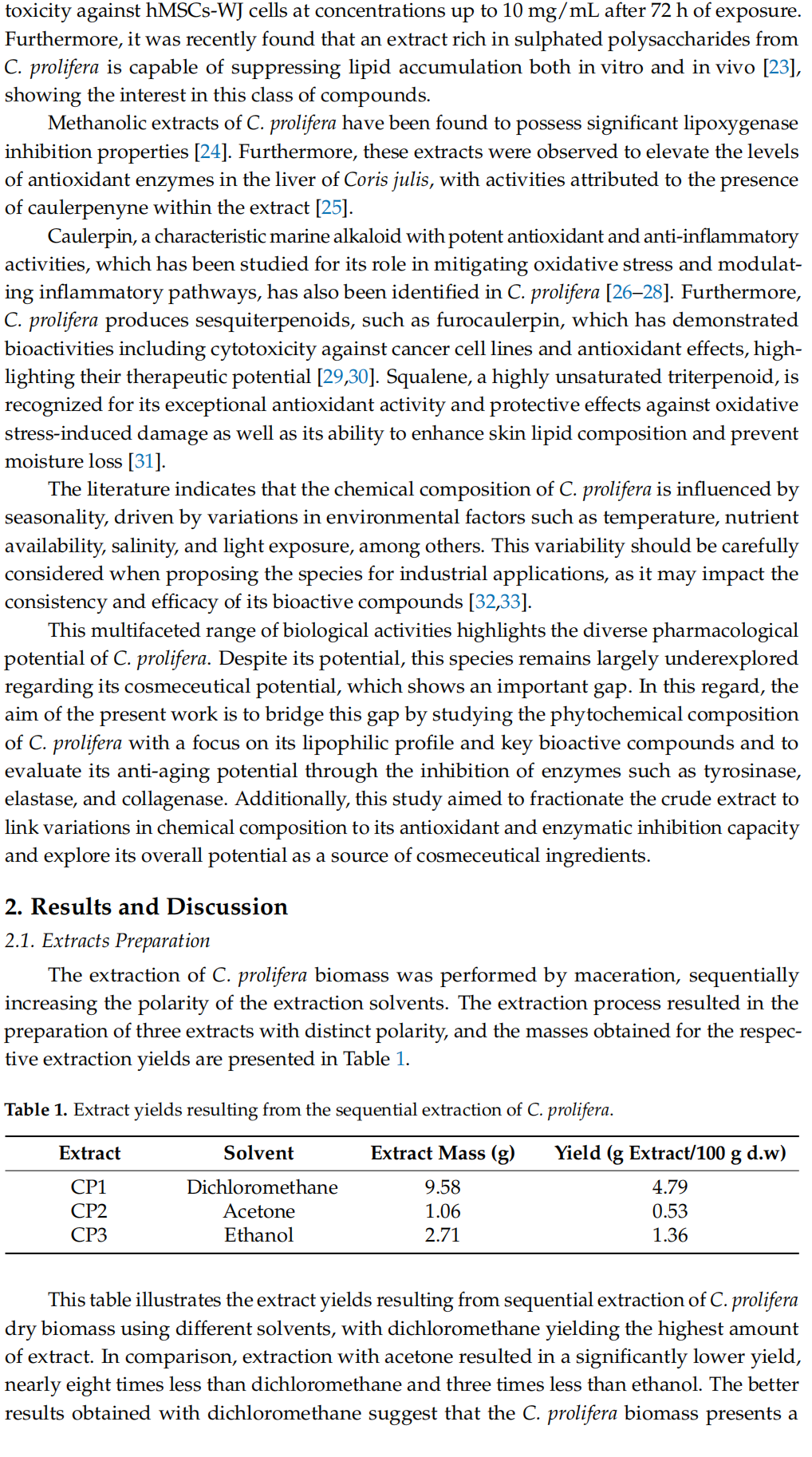
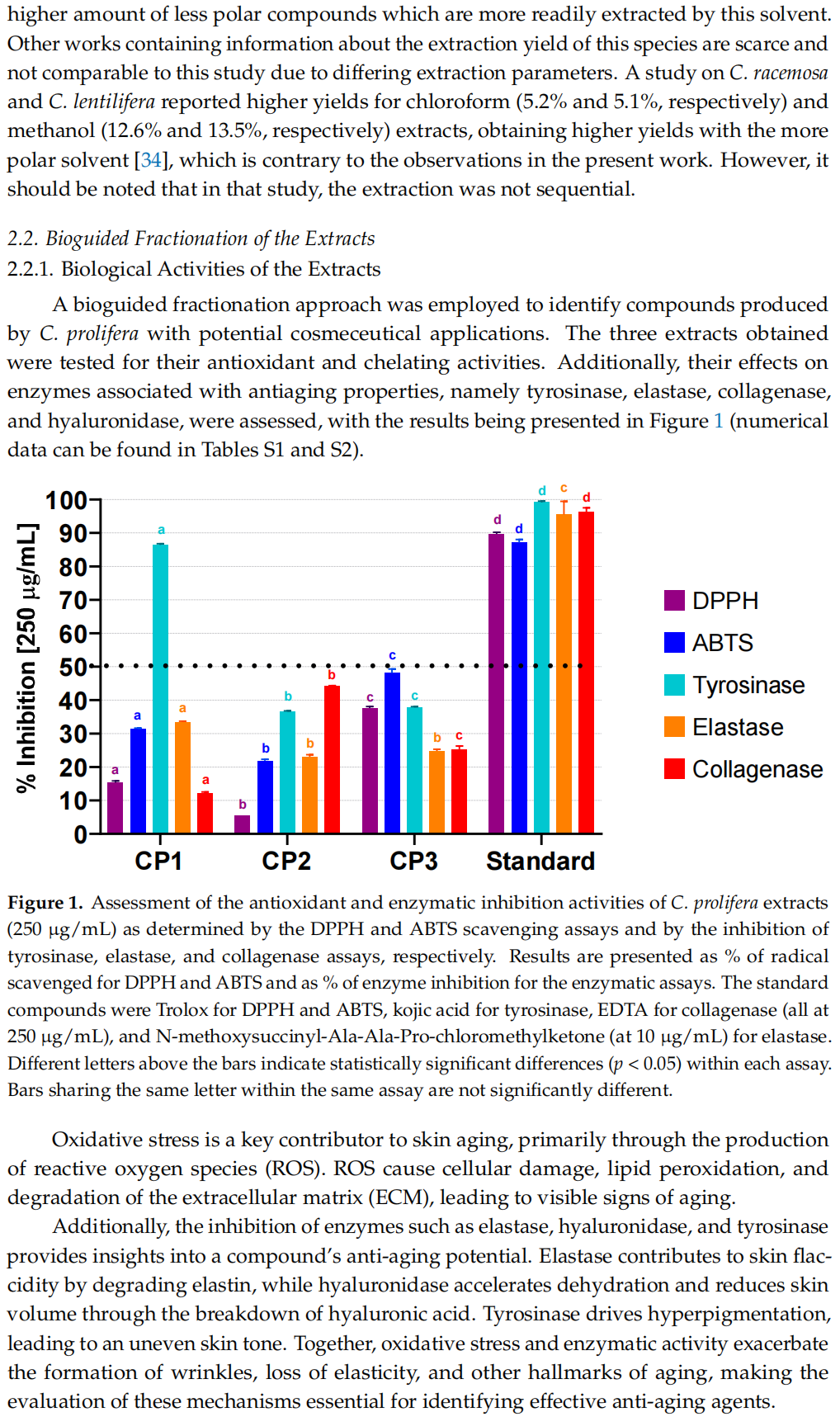
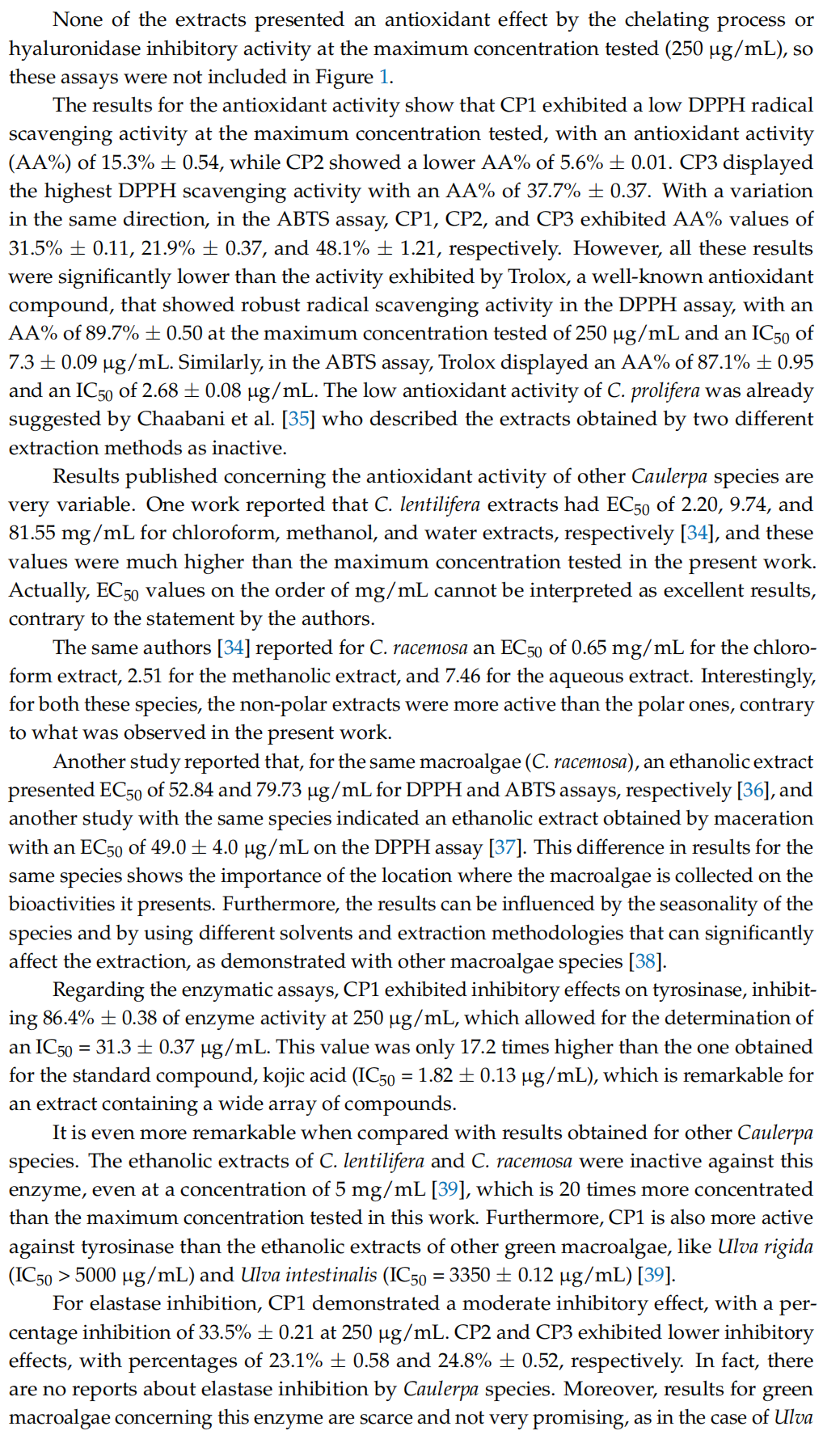
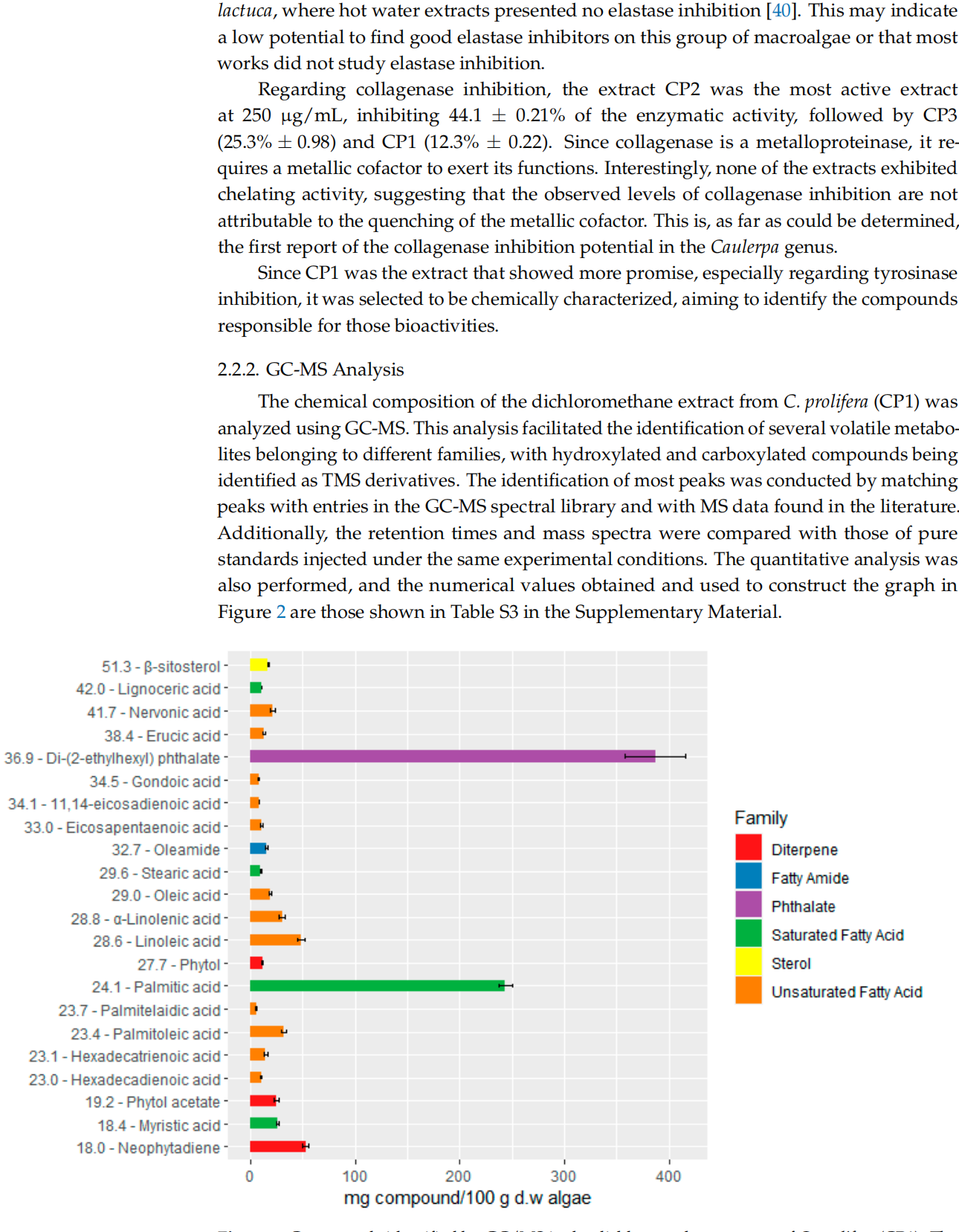
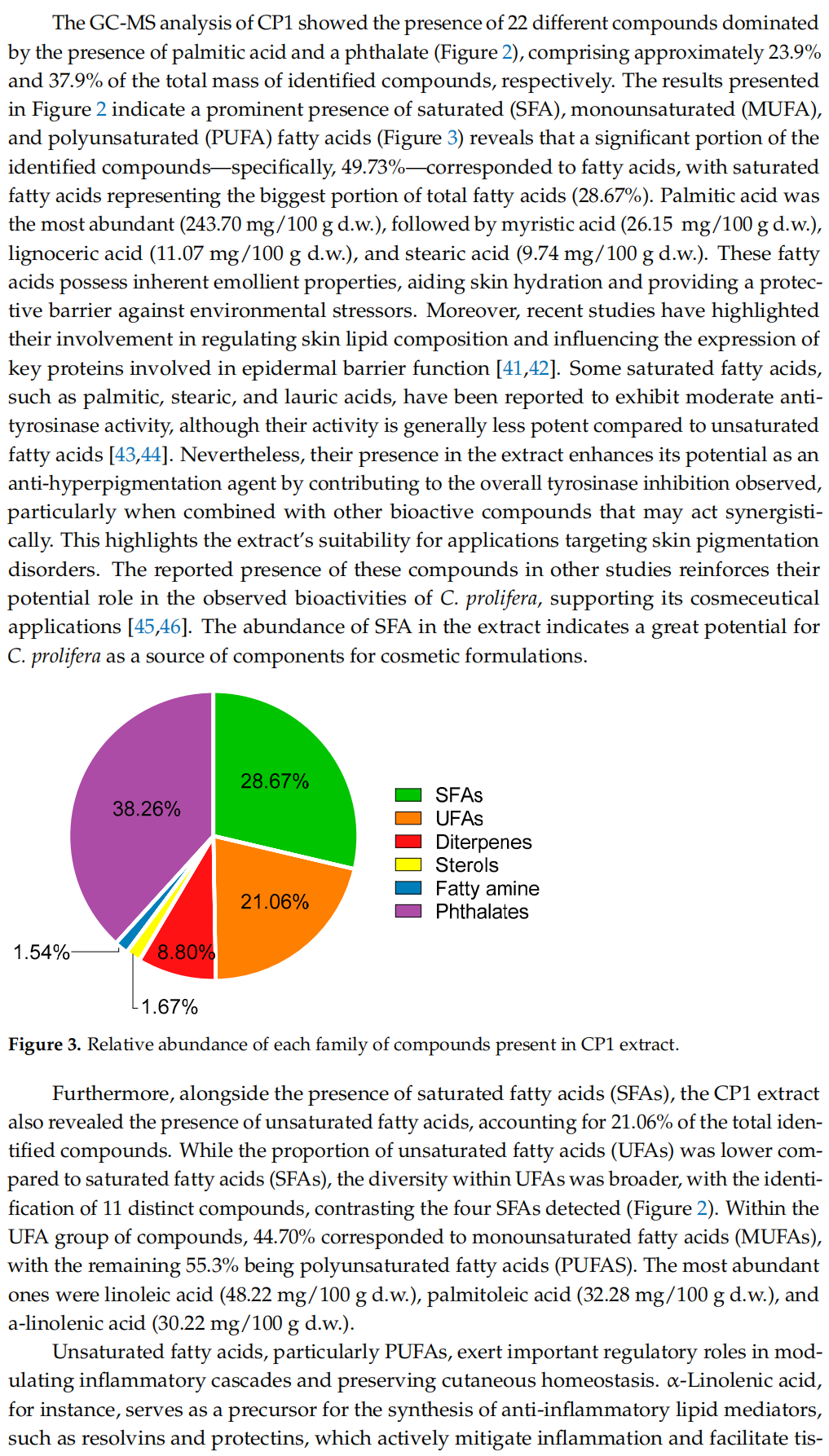
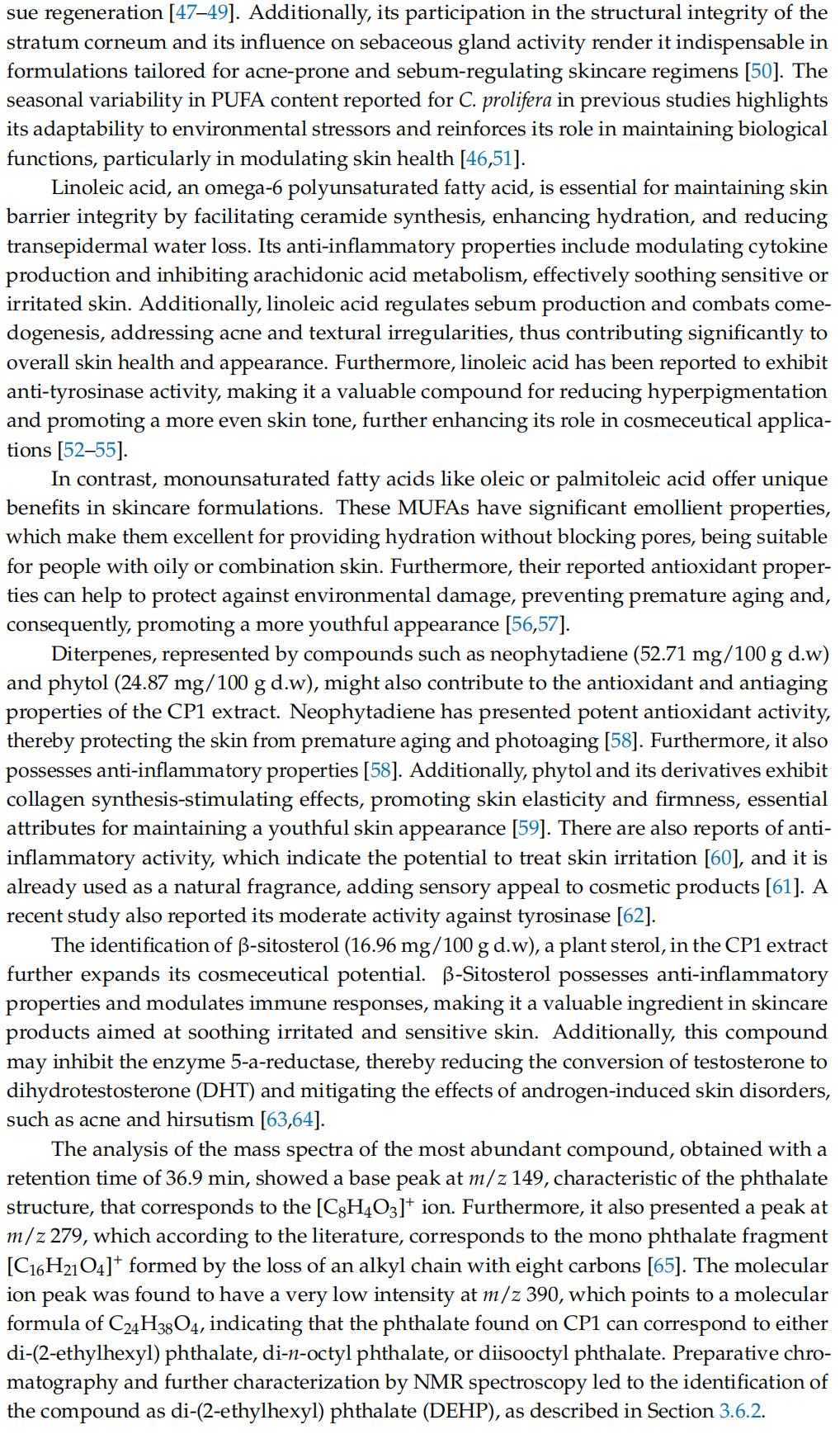
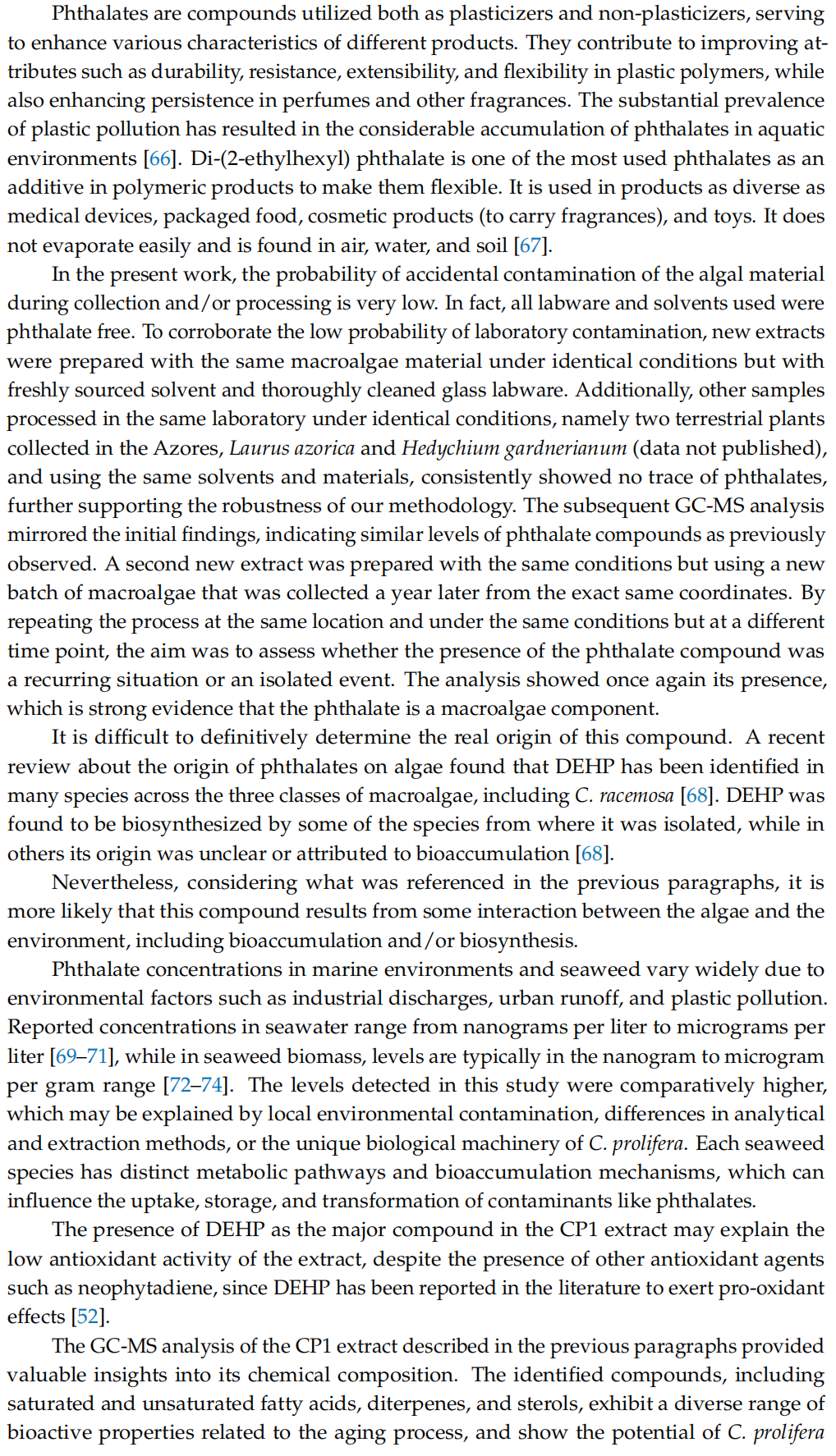
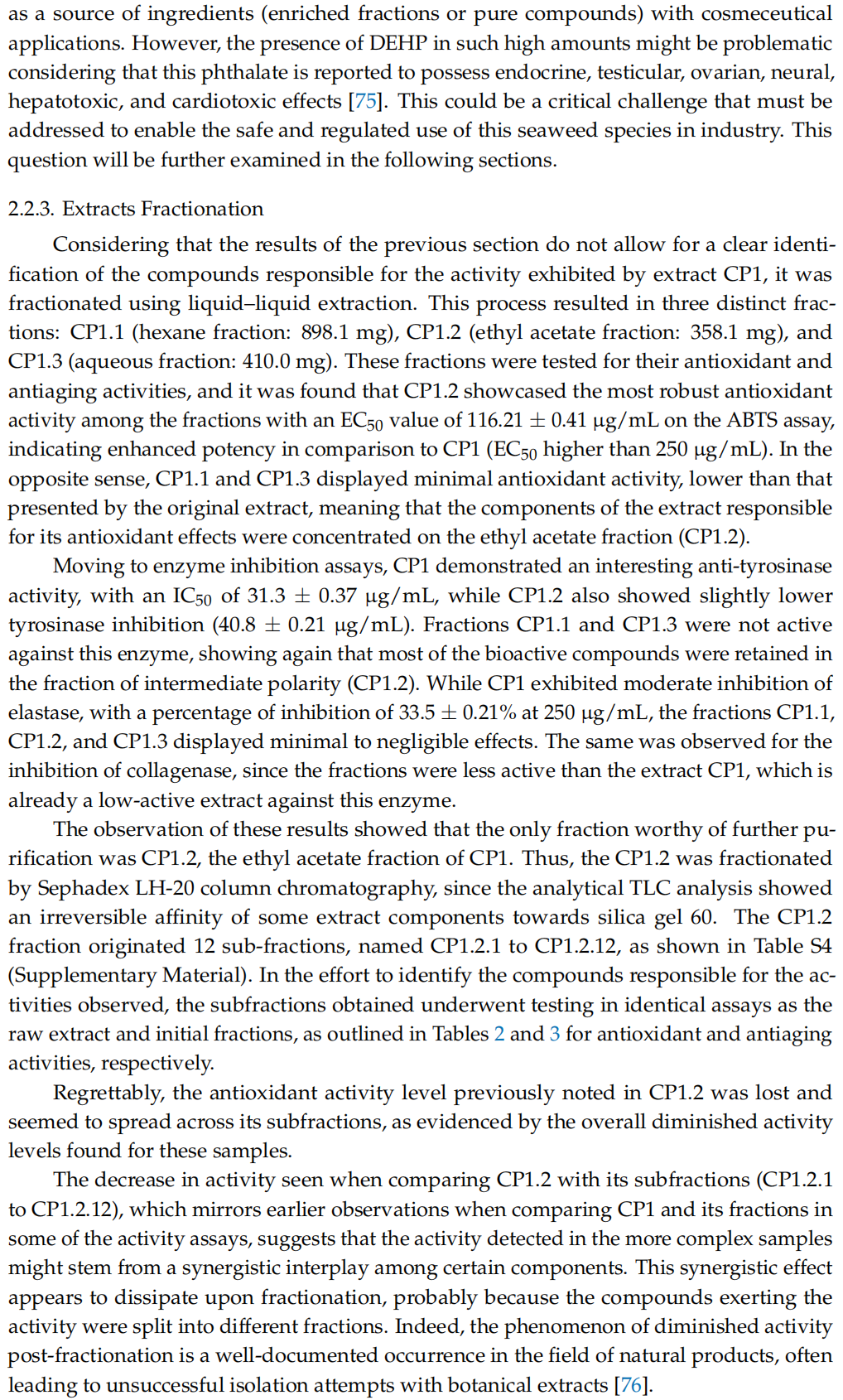

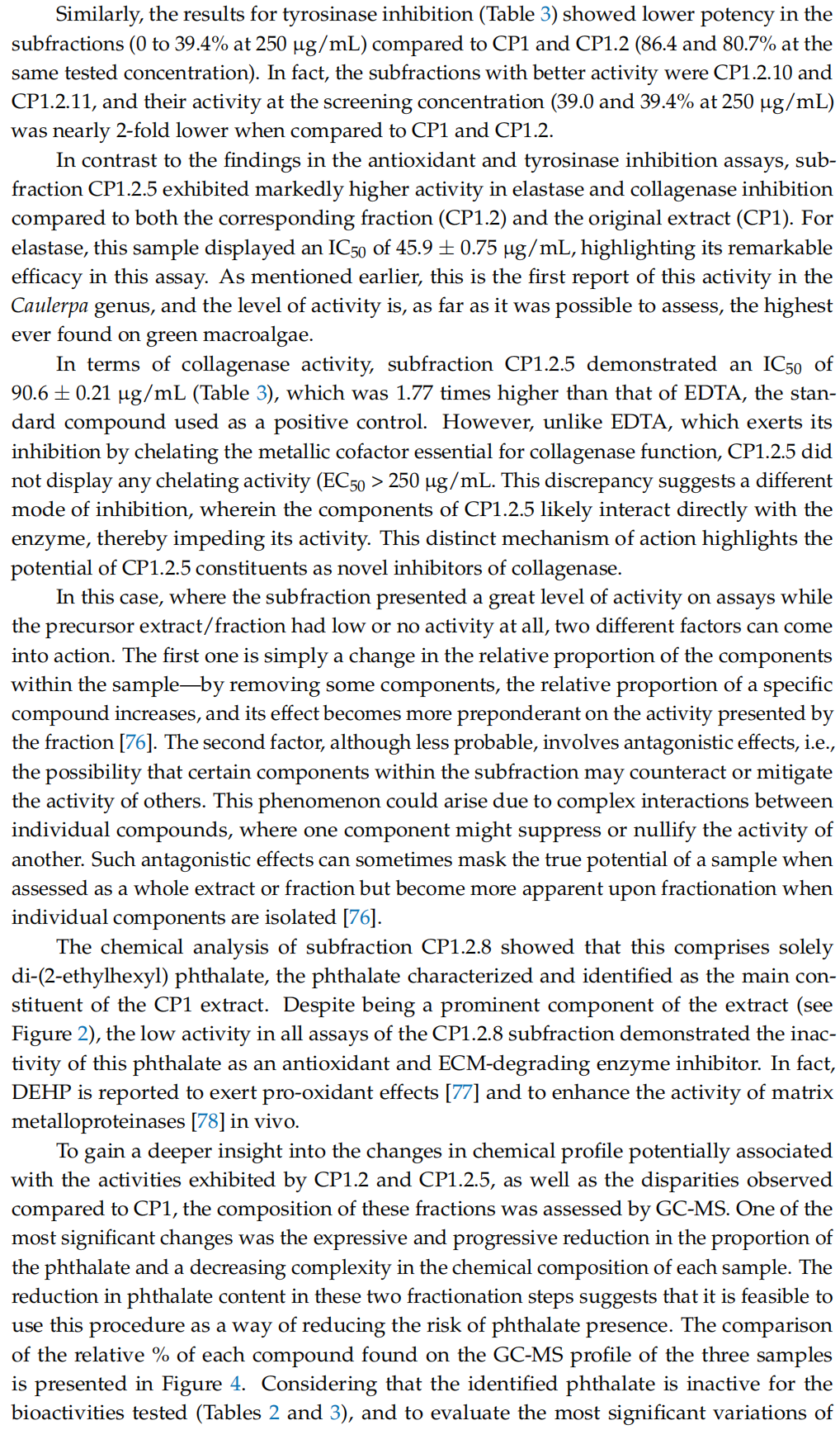
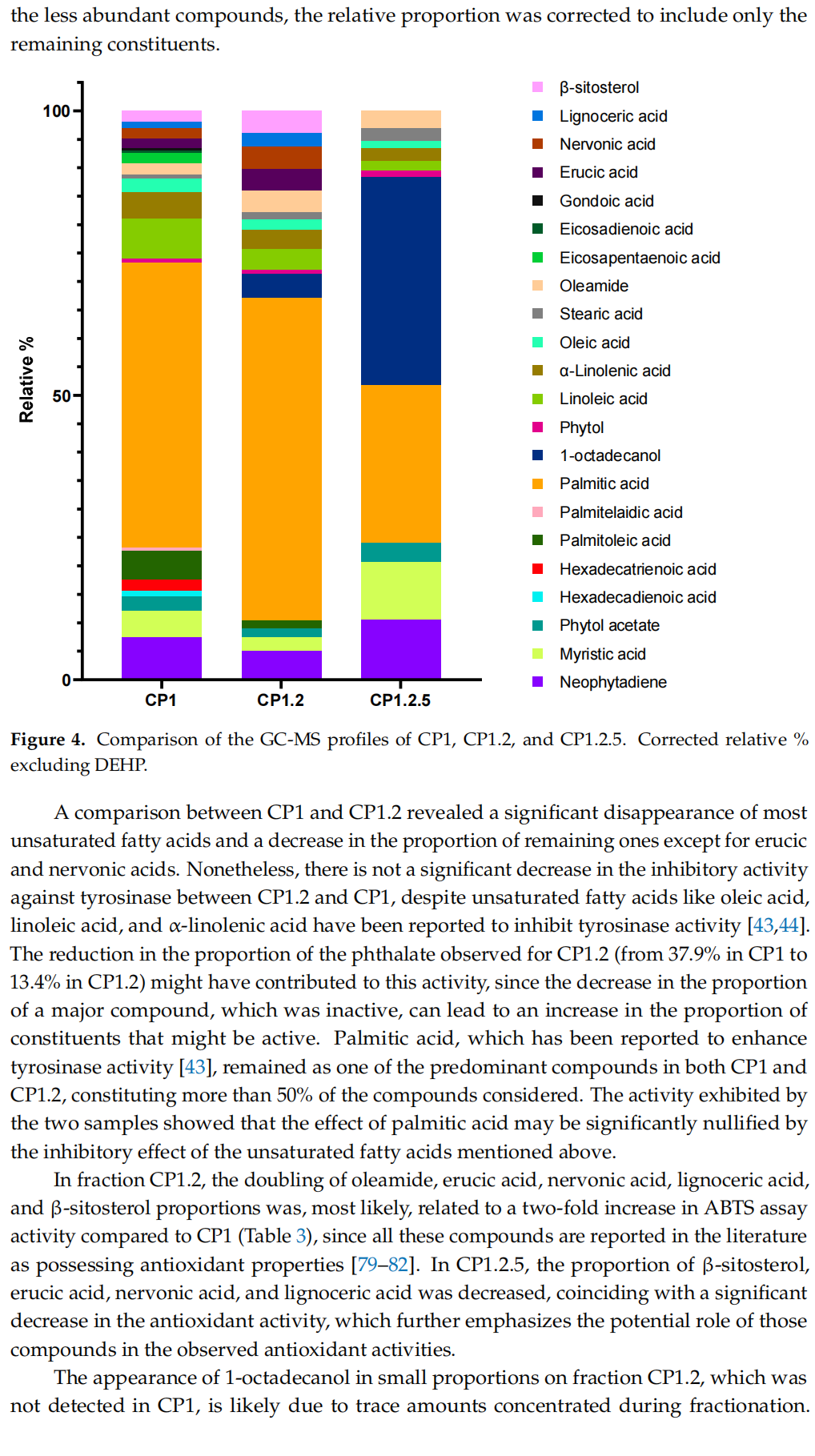


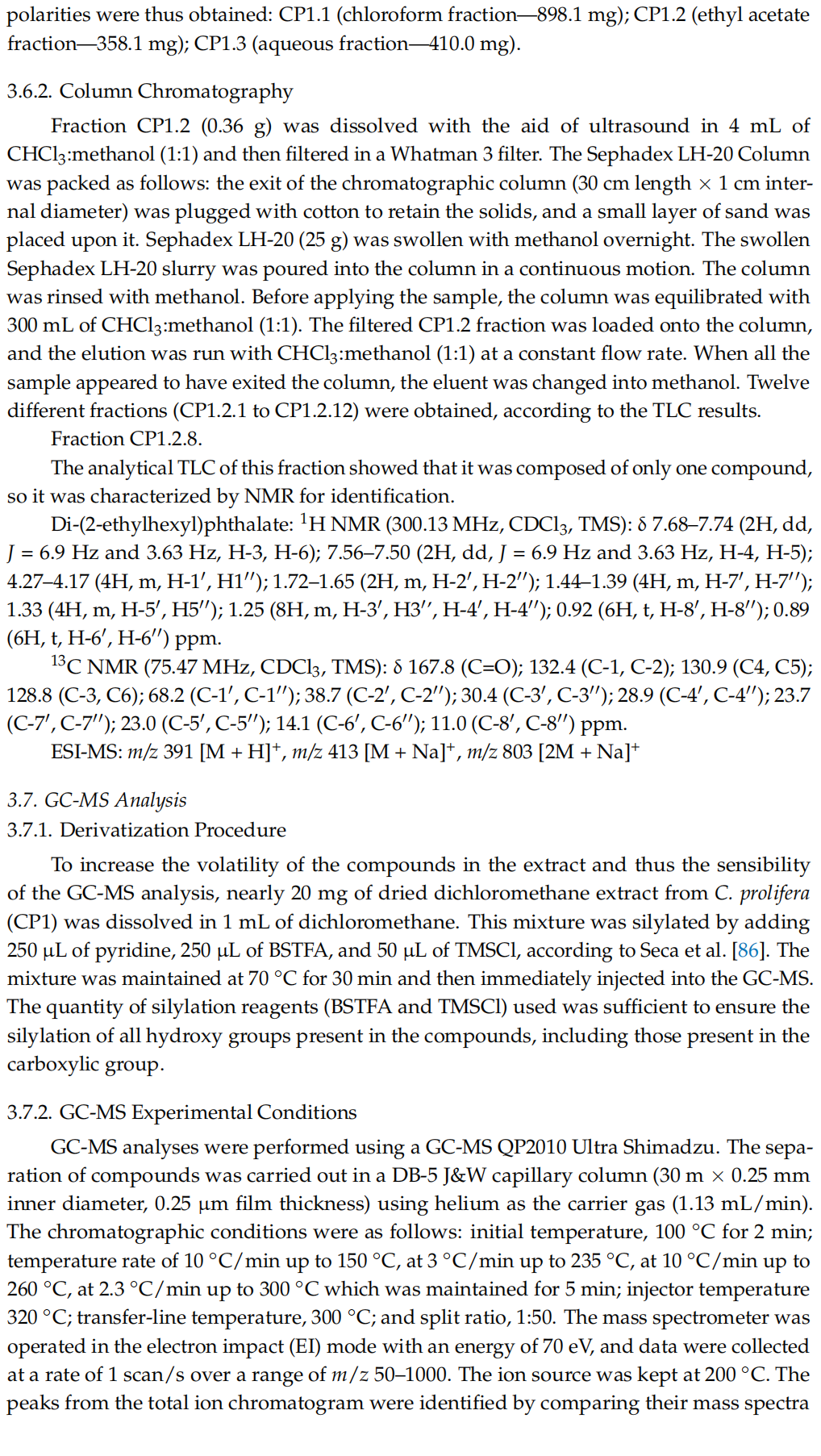
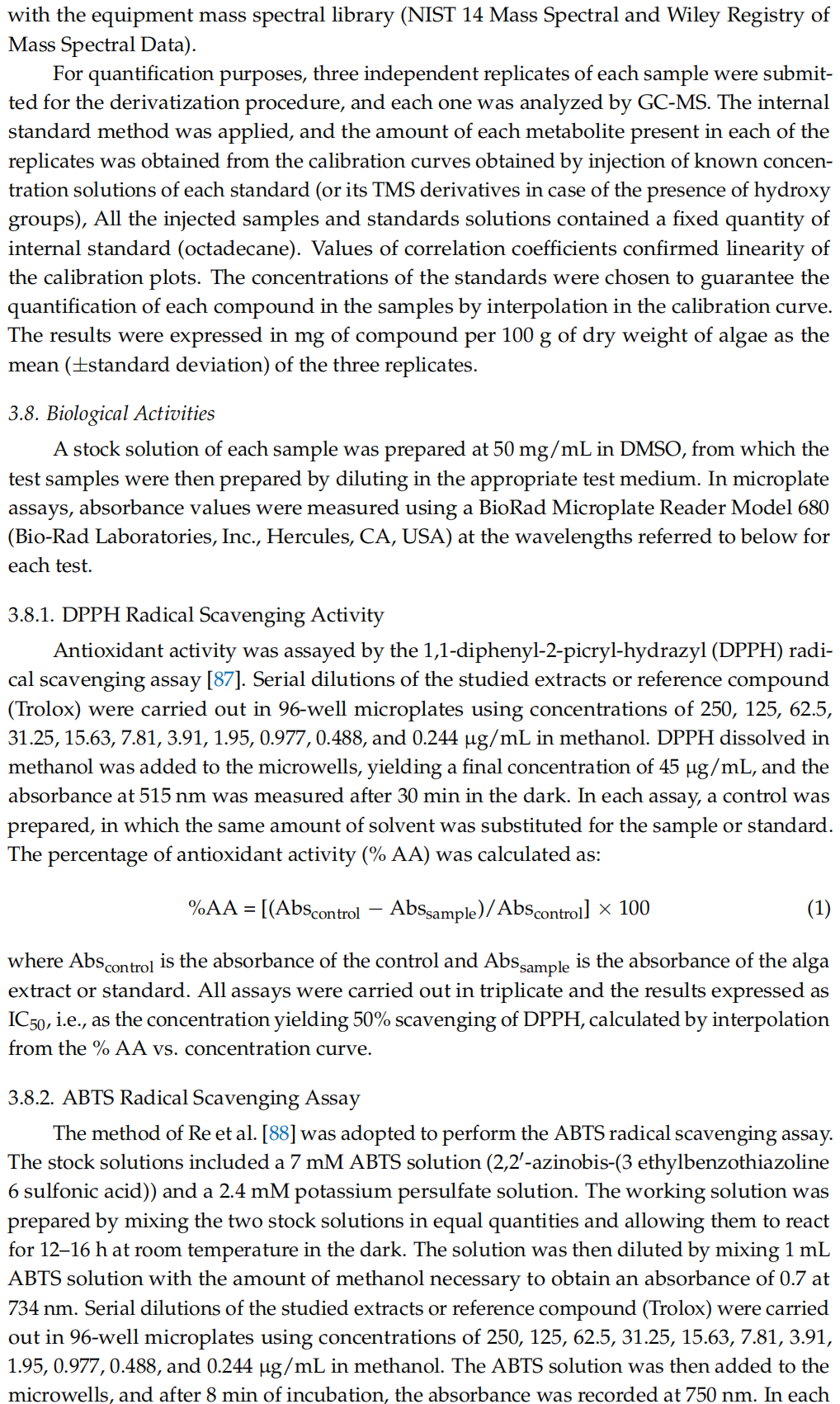
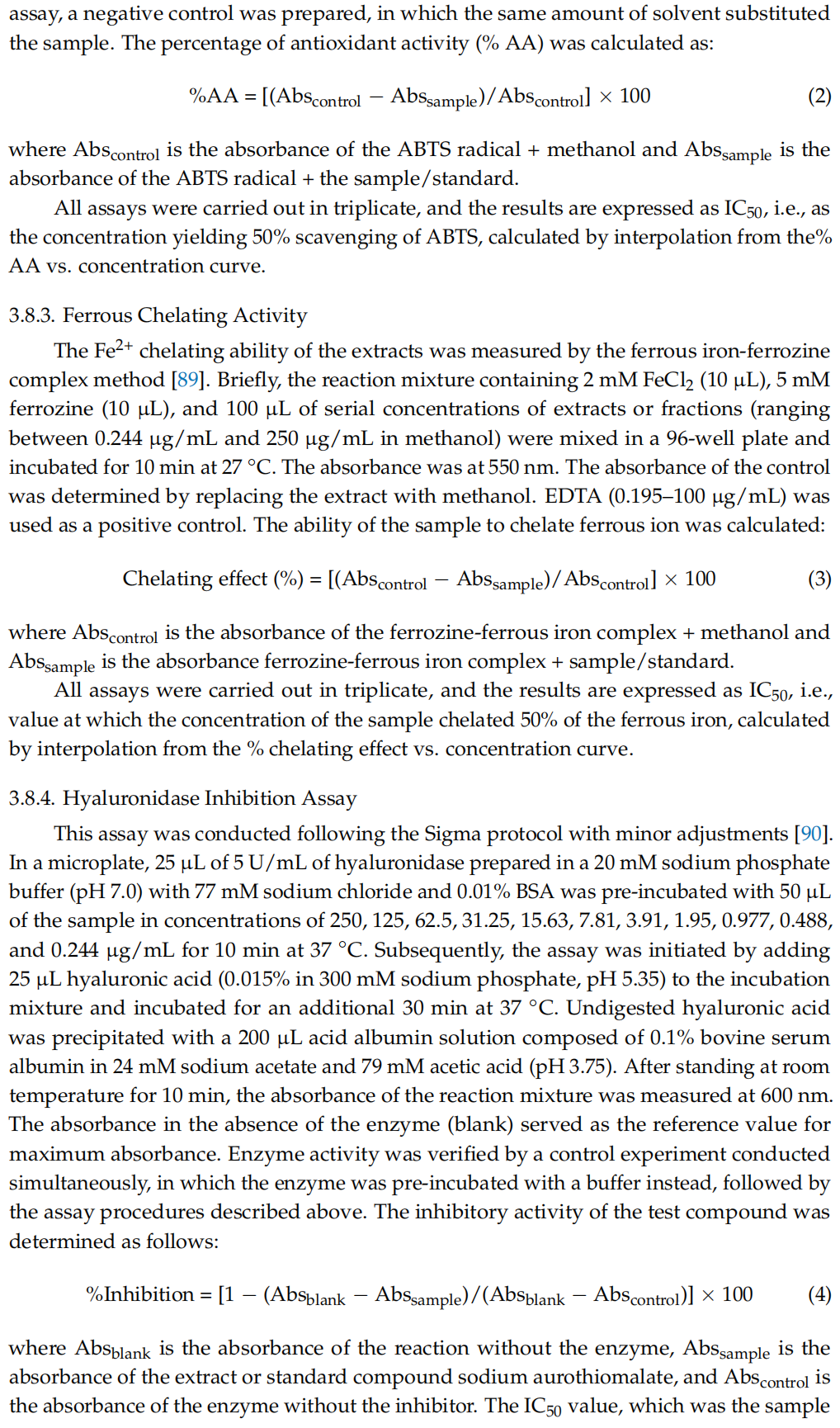

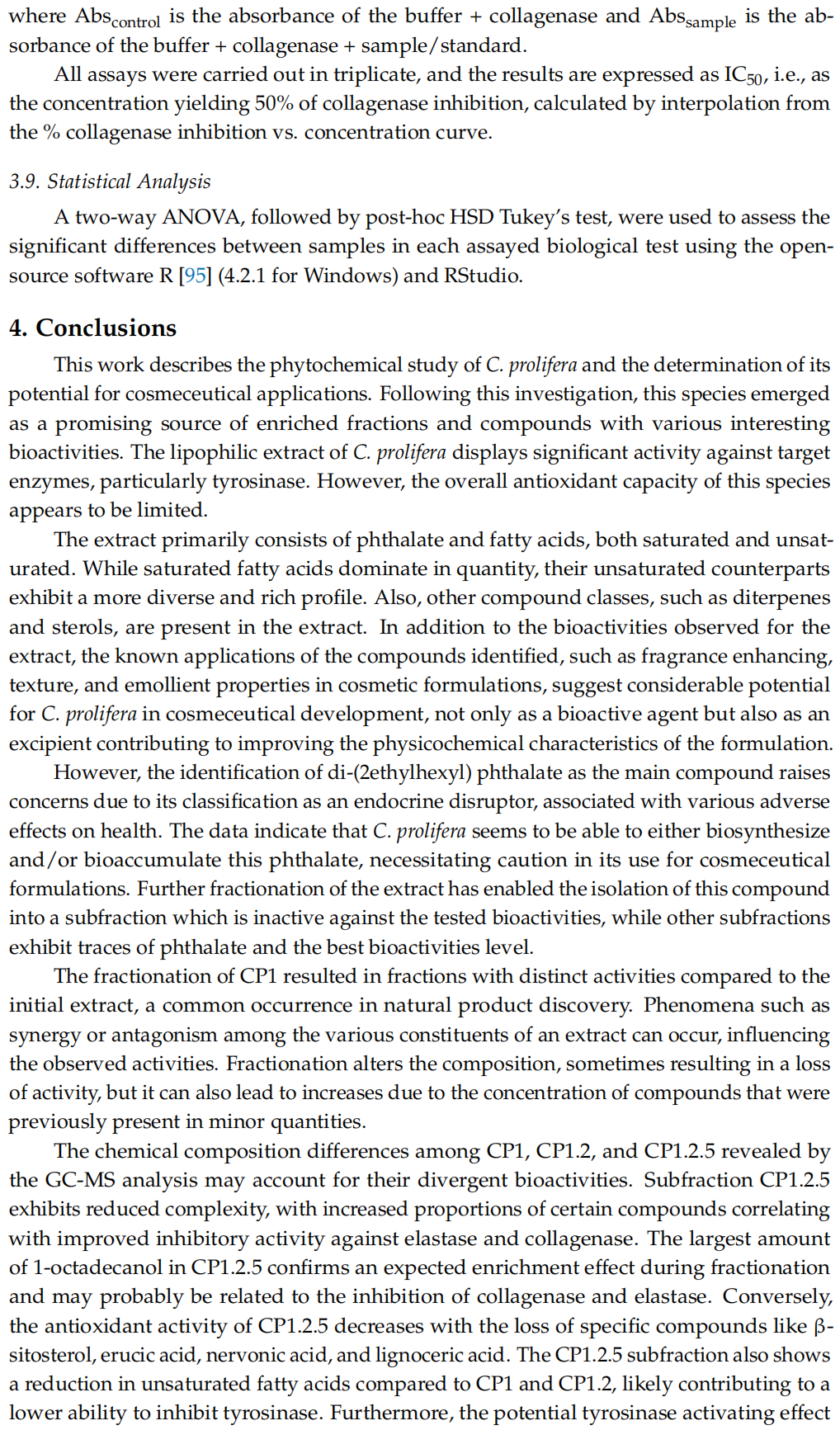

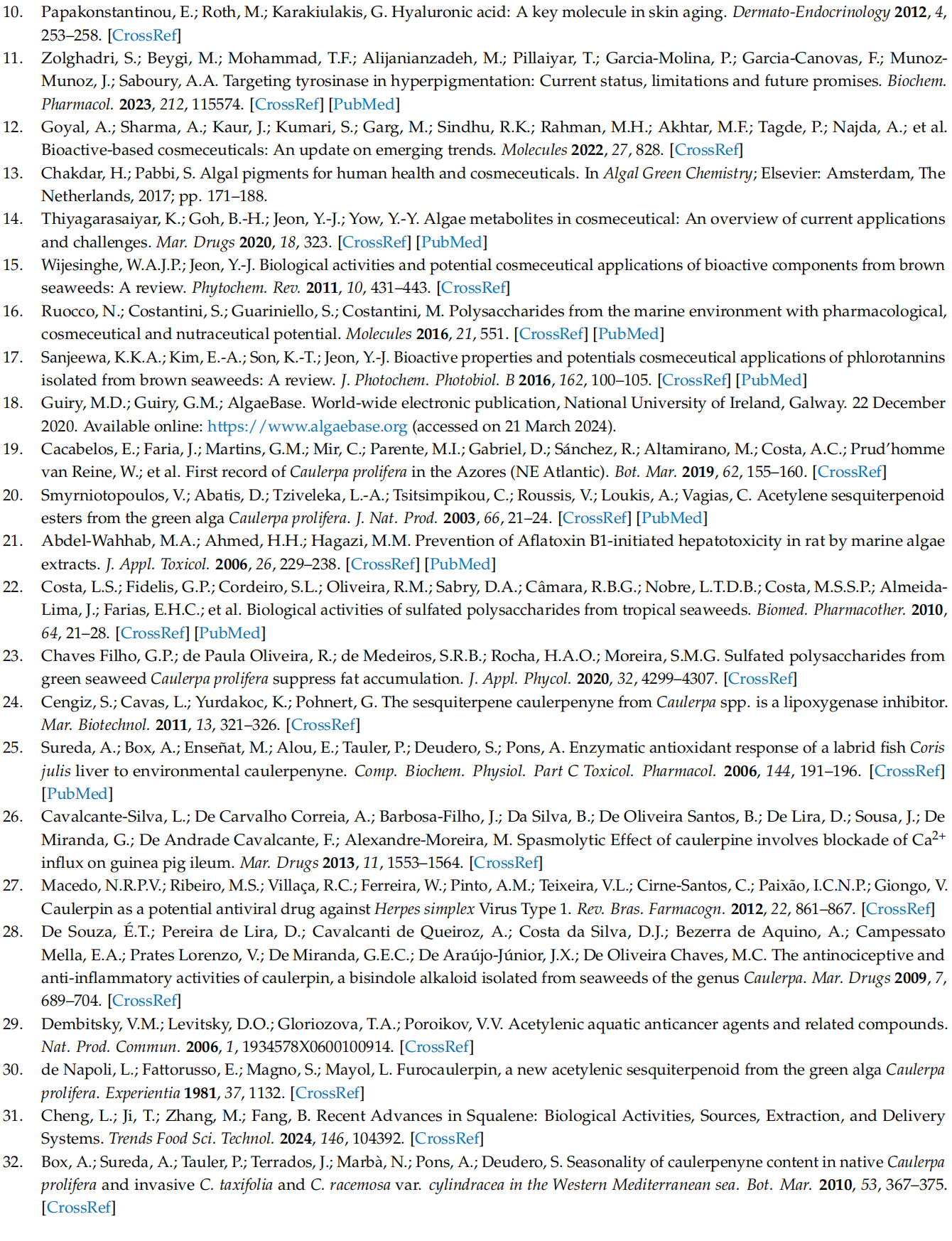

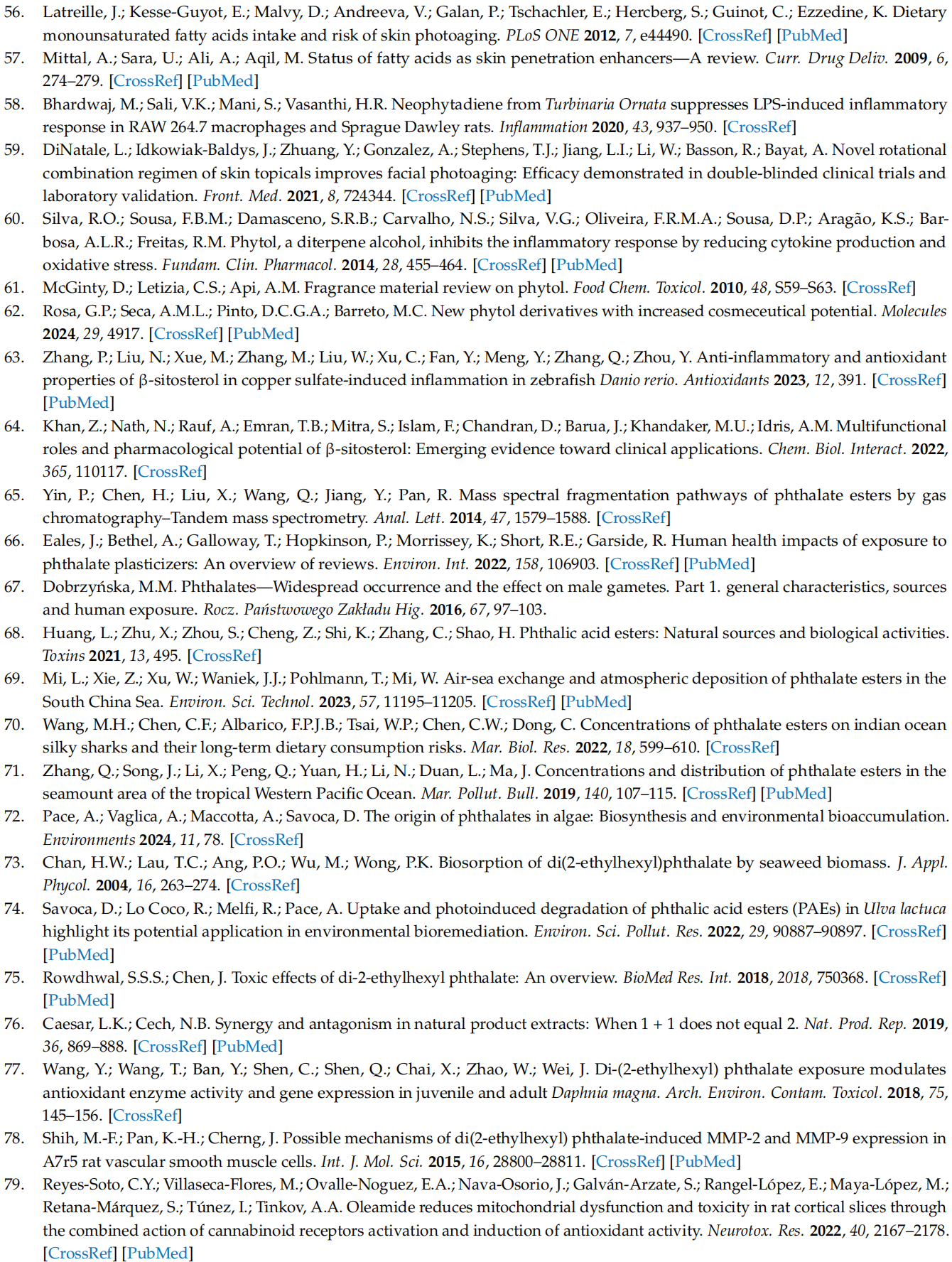

This article is excerpted from the Mar. Drugs 2025, 23, 83 by Wound World.
Gonçalo P. Rosa 1,2 , Maria Carmo Barreto 1 , Ana M. L. Seca 1,2 and Diana C. G. A. Pinto 2,*
1 University of the Azores, Faculty of Sciences and Technology, Centre for Ecology, Evolution and Environmental Changes (cE3c), Azorean Biodiversity Group & Global Change and Sustainability Institute (CHANGE), 9501-321 Ponta Delgada, Portugal; 该Email地址已收到反垃圾邮件插件保护。要显示它您需要在浏览器中启用JavaScript。 (G.P.R.); 该Email地址已收到反垃圾邮件插件保护。要显示它您需要在浏览器中启用JavaScript。 (M.C.B.); 该Email地址已收到反垃圾邮件插件保护。要显示它您需要在浏览器中启用JavaScript。 (A.M.L.S.)
2 LAQV-REQUIMTE, Department of Chemistry, University of Aveiro, Campus Universitário de Santiago, 3810-193 Aveiro, Portugal
* Correspondence: 该Email地址已收到反垃圾邮件插件保护。要显示它您需要在浏览器中启用JavaScript。
Academic Editor: Charlotte Jacobsen
Received: 26 December 2024
Revised: 3 February 2025
Accepted: 11 February 2025
Published: 14 February 2025
Citation: Rosa, G.P.; Barreto, M.C.; Seca, A.M.L.; Pinto, D.C.G.A. Antiaging Potential of Lipophilic Extracts of Caulerpa prolifera. Mar.
Drugs 2025, 23, 83. https:// doi.org/10.3390/md23020083
Copyright: © 2025 by the authors. Licensee MDPI, Basel, Switzerland.
This article is an open access article distributed under the terms and conditions of the Creative Commons Attribution (CC BY) license
(https://creativecommons.org/ licenses/by/4.0/).
Abstract: The cosmeceutical industry has increasingly turned its attention to marine macroalgae, recognizing their significant bioactive potential as sources of natural compounds for skincare applications. A growing number of products now incorporate extracts or isolated compounds from various macroalgae species. However, many species remain underexplored, highlighting a valuable opportunity for further research. Among these, Caulerpa prolifera (Forsskål) J.V. Lamouroux has emerged as a promising candidate for cosmeceutical applications. This study provides the most comprehensive phytochemical assessment of C. prolifera to date, revealing its potential as a source of bioactive extracts and compounds. The analysis identified key components of its lipophilic profile, predominantly saturated and unsaturated fatty acids, alongside di-(2-ethylhexyl) phthalate—an endocrine disruptor potentially biosynthesized or bioaccumulated by the algae. While the crude extract exhibited moderate tyrosinase inhibitory activity, its overall antioxidant capacity was limited. Fractionation of the extract, however, yielded subfractions with distinct bioactivities linked to changes in chemical composition. Notably, enhanced inhibitory activities against elastase and collagenase were observed in subfractions enriched with 1-octadecanol and only traces of phthalate. Conversely, antioxidant activity diminished with the loss of specific compounds such as β-sitosterol, erucic acid, nervonic acid, and lignoceric acid. This work advances the understanding of the relationship between the chemical composition of C. prolifera and its bioactivities, emphasizing its potential as a source of cosmeceutical ingredients, leading to a more comprehensive valorization of this macroalga.
Keywords: macroalgae; phytochemical profile; cosmeceutical potential

























This article is excerpted from the Mar. Drugs 2025, 23, 83 by Wound World.
